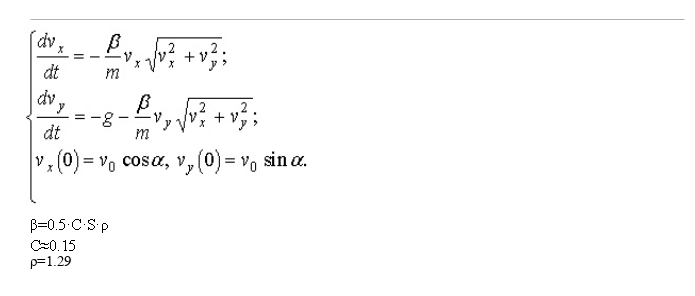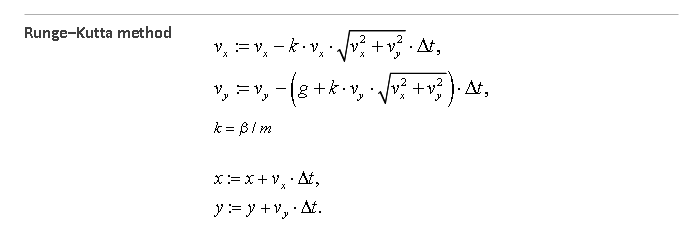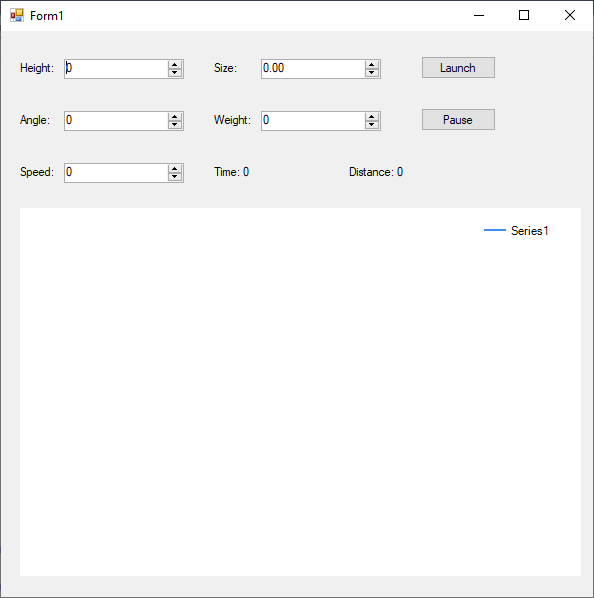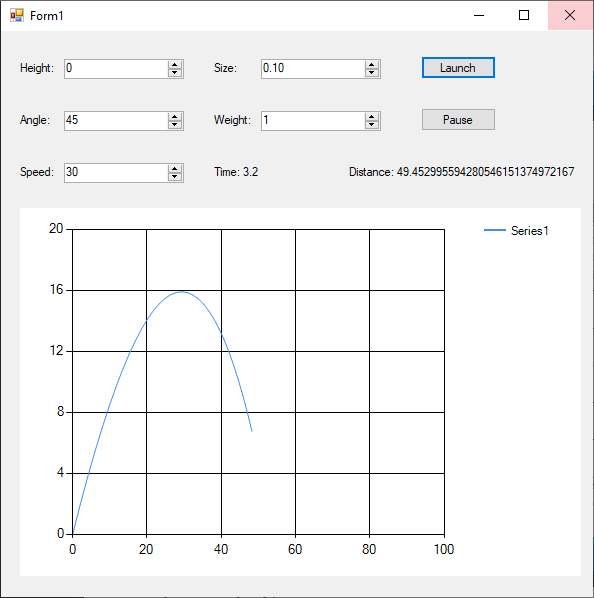Flight with atmosphere
From March 18, 2020
Given the following model we are going to simulate a flight trajectory taking atmosphere into consideration.

First we have to solve the model and that’s what will be implemented in the program.

Result


Implementation
First Model
chart1.Series[0].Points.Clear();
flight = new Flight(inputHeight.Value, inputSpeed.Value, inputAngle.Value, inputSize.Value, inputWeight.Value);
chart1.Series[0].Points.AddXY(flight.X, flight.Y);
timer1.Start();
Model on each unit of time
flight.NextStep();
label4.Text = "Time: " + flight.T;
label7.Text = "Distance: " + flight.X;
chart1.Series[0].Points.AddXY(flight.X, flight.Y);
if (flight.Y <= 0)
{
timer1.Stop();
}
Model
using System;
using System.Collections.Generic;
using System.Linq;
using System.Text;
namespace Simulation_Lab3
{
class Flight
{
decimal t, s;
decimal x, y;
decimal v, v0;
decimal m, k;
decimal vx, vy;
decimal cosa, sina;
const decimal C = 0.15M;
const decimal g = 9.81M;
const decimal dt = 0.1M;
const decimal rho = 1.29M;
public decimal T { get { return t; } }
public decimal X { get { return x; } }
public decimal Y { get { return y; } }
public Flight(decimal inputHeight, decimal inputSpeed, decimal inputAngle, decimal inputSize, decimal inputWeight)
{
t = 0;
x = 0;
y = inputHeight;
v0 = inputSpeed;
double a = (double) inputAngle * Math.PI / 180;
cosa = (decimal) Math.Cos(a);
sina = (decimal)Math.Sin(a);
s = inputSize;
m = inputWeight;
k = 0.5M * C * rho * s / m;
vx = v0 * cosa;
vy = v0 * sina;
}
public void NextStep()
{
t += dt;
v = (decimal) Math.Sqrt((double)(vx * vx + vy * vy));
vx = vx - k * vx * v * dt;
vy = vy - (g + k * vy * v) * dt;
x = x + vx * dt;
y = y + vy * dt;
}
}
}